What Are the Benefits of Multi Channel Marketing
The modern consumer looks to shop a lot differently than before. And lately, there has been even greater disruption to regular life. It should come as no surprise that shoppers are making more purchases online than ever. They're spending more time on ecommerce websites and mobile devices. They're also discovering brands via social media, blogs, mobile apps, and just about anywhere you can think of in the digital world.
Smaller and niche businesses might be used to focusing on one or two channels for gaining leads. But many are joining the throngs of larger companies in looking to have a presence on as many marketing channels as possible. As marketers, we spend a lot of time with the line of thinking that "less is more." But when it comes to gaining traction with new potential customers, that may not be the case.
We aren't talking about the ads themselves being more, but the multiple levels of the business to consumer interaction. And no, we aren't talking about SEO and ad copy. We are talking about the bigger picture that is multi-channel marketing.
What is Multi-Channel Marketing?
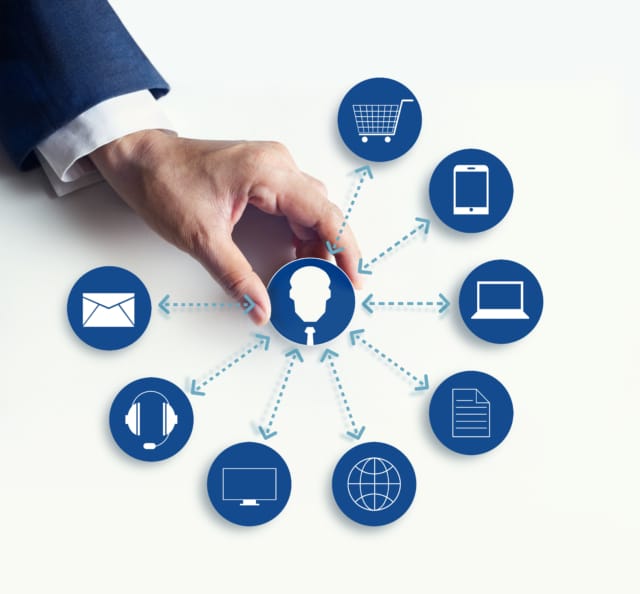
Multi-channel marketing at first glance is a simple concept. That being the use of many different channels to market to a target audience. Typically, with the term multi-channel marketing, the aim of any business is to have a wide presence and get their messaging to the right customers. In other words, the goal of a marketer in multi-channel marketing is to have a dedicated space on as many marketing channels as possible.
The marketing efforts will be both online and offline. Marketing channels like websites, social media, a retail location, direct mail, magazines, TV, radio and much more. To prioritise awareness, the focus on the customer may suffer. With multi-channel marketing, you will lift the exposure of your brand, company, products, or services.
Multi-Channel Marketing vs. Omnichannel Marketing
Multi-channel marketing as a concept is all about casting as wide of a net as possible to sell goods and services. This includes various channels for both outbound and inbound marketing. Customers today have more choices than ever in human history.
The theory of multi-channel, then, is that by increasing exposure, you are increasing your amount of potential customers. You are maximising the number of interactions for engagement. Each channel can have it's own packaged interaction with each segment of your customers, or even each individual.
However, this is not the case with omnichannel marketing . Instead, omnichannel marketing uses the concept of multi-channel marketing as a framework but builds upon it.
Omnichannel marketing takes a holistic approach when it comes to marketing to the consumer. The focus is on each customer and how to improve and tailor each interaction to suit them. When taking the omnichannel approach, marketers must aim for each channel to work together in one seamless process.
This means that a potential customer can move from one channel to another while staying on the same path to conversion. Each channel can hold the customer's hand while they move down the sales funnel. They can start to shop on one channel and quickly finish the buying experience on a different channel.
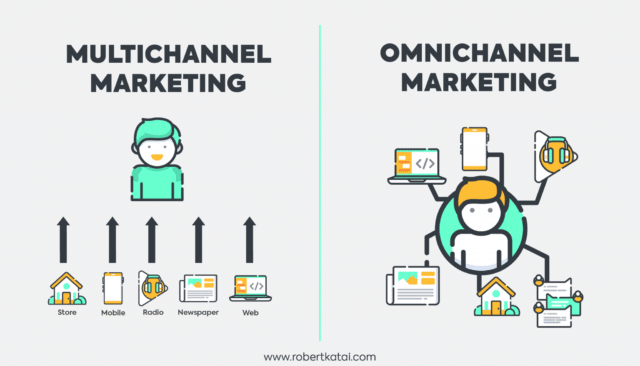
This cohesion between channels is a distinction from the concept of multi-channel marketing. Because with multi-channel marketing, each channel is just a standalone engagement. Instead of working together, each touchpoint is attempting to chip away and garner leads on its own. Whereas with omnichannel marketing, the next interaction will be influenced by a previous one.
Benefits of Multi-Channel Marketing
Multi-channel marketing can help businesses in several ways. Some benefits will be more valuable than others. Implementing a multi-channel marketing strategy, of course, comes with its own cost. Each business will need to decide if multi-channel marketing is for them. Let's take a look at the main ways companies can benefit from multi-channel marketing.
Expand your reach
As stated earlier, marketers are constantly adjusting ads and campaigns. Always trimming the fat to keep a clear message. In the world of marketing, cost-effectiveness is key. But by having a presence on more marketing channels, you will increase the reach of your brand. By having more customer touchpoints, you can generate more leads.
You will also increase your brand awareness with your target audience. A simple hashtag on a social network can generate an enormous amount of potential customer views.
Increase sales
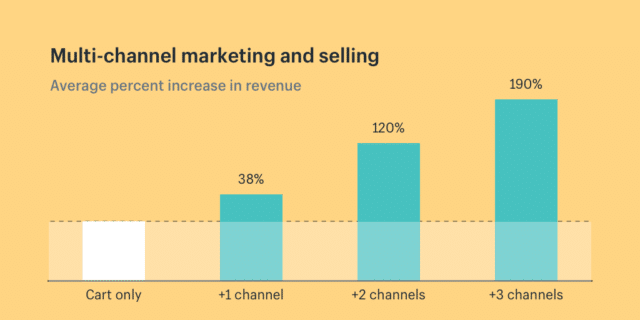
Perhaps it goes without saying, but more marketing channels equates to more conversion opportunities. Leveraging its platform data, Shopify found businesses using three or more channels almost doubled the revenue of a single-channel approach. Any good salesperson knows that if they don't get you on the first pitch, there is always the next one! Being on different platforms helps your brand market to diverse buyer personas.
It can be obvious, like a generational aversion or dependency on technology. Or it can be more niche. If your buyer persona is a developer, then surely you want a presence on something like GitHub. If your target audience is made up of teenage guitar players, then you need your brand to be on YouTube and Instagram.
Engagement
Today's shoppers are using channels like social media, blogs, and ecommerce websites. How can you expect to gain leads from your target audience if you ignore their preferred channels?
Posts on spaces like Facebook, Twitter, or LinkedIn can effectively engage customers . Many times these touchpoints engage audience segments which otherwise would be ignored. Social media and content marketing can generate a discussion and initiate a sales funnel.
Consistency
When your brand has a presence on many platforms, it gives your company the ability to hone a consistent message. At each different customer touchpoints, a business can drive home a brand image or message. Your targeted buyer personas will identify with your brand and be more likely to buy from your company when shopping in that market.
Big purchases
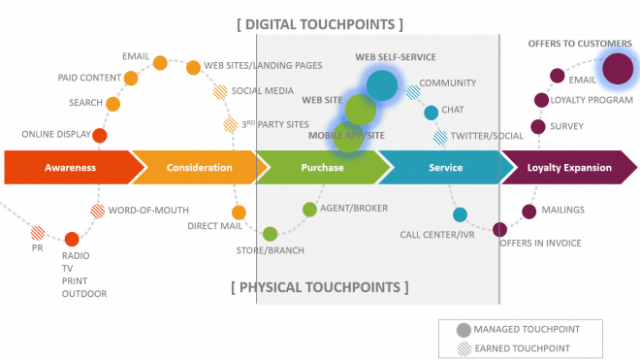
Customers have access to more information than ever before. They can make a much more informed decision in the buying process. This becomes more important when it comes to bigger purchases. And a lot of companies are selling products with a longer buying cycle. For these products and services, a marketing mix with multiple touchpoints can help nudge a customer's journey.
Examples of Multi-Channel Marketing
Today, you don't have to look far to find multi-channel marketing in full effect. Companies from sole proprietorships to global enterprises use it in some form or another. Nonprofits and government agencies also use the tactics involved with multi-channel marketing. Let's take a look at a few of the most successful multi-channel campaigns.
ASOS
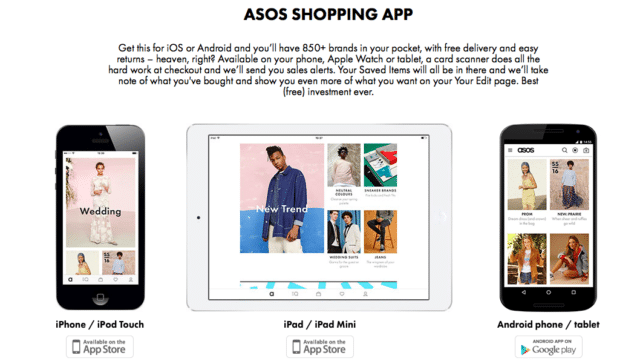
British fashion company ASOS has a well-designed ecommerce store. But the company also makes exceptional use of their Instagram page, where they run promotions, ads, and give fashion advice. They are also quick to comment and reply to their followers.
And besides a killer IG account, ASOS is also in virtual spheres like Facebook and Snapchat. And each channel has unique content to appeal to the different user bases of each channel. This type of active and fun engagement helps build loyalty with a large portion of their target audience.
And when it comes to shopping, the ASOS mobile app provides a seamless experience. Shoppers can start shopping on their smartphone web browser or mobile app and complete the purchase later on their laptop. Or the other way around. But ASOS also encourages mobile users to shop with the app by offering app-only discounts. Why is this? Because the app also makes it a breeze to post a new fashion purchase on Instagram or other social media channels.
Disney
Most of us get a warm and fuzzy feeling when we think about the childhood memories of watching Disney's animated classics. But today, Disney is a massive and global corporation that goes far beyond cartoons!
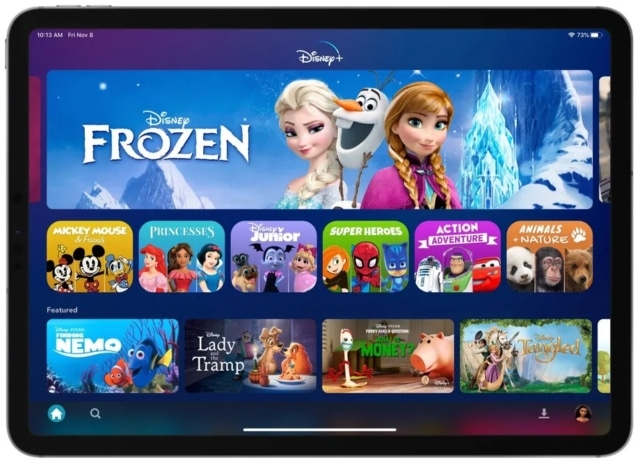
From one website, you can find anything related to the Disney brand: toys, cartoons, films, videos games, music. The list goes on and on! Oh, and you can also purchase tickets to the theme parks while you use Disney's vacation planner . The mobile website is highly optimised for any screen size or web browser but you can get even better performance with Disney's mobile app.
Disney's recent move into the entertainment industry with Disney+ has added yet another product to the behemoth's line. But think again, a streaming service is just as much a marketing tool as other channels. Besides being able to use the service on any device, purchases inspired by a film have never been easier, and users can quickly gain access to shopDisney or any other channel directly from the app.
You basically can't help but move from one of Disney's channels to another. Even if it wasn't your original goal. And you can get to anything Disney from whatever touchpoint you encounter.
Gatwick Airport
London's Gatwick Airport is one of the busiest airports in Europe. In 2010, it made the move to implement multi-channel marketing . Long layovers can be taxing. Getting to connecting flights can be highly stressful. And long waits with border agents are the last thing passengers wish for after a long flight. Gatwick airport saw a chance to improve customer experience via a multi-channel strategy.
Juggling millions of people from all over the world and getting them to where they need to go doesn't happen by accident. There will always be delays and human and computer errors. Gatwick airport implemented Twitter as a real-time customer service support tool.
Support via Twitter is 24 hours and all staff are trained with how to use the platform. Information screens are placed all over the airport to encourage passengers to tweet. What entailed was the formation of an effective real-time space for customer support.

Construction hoardings can be confusing and an ugly sight to behold. Instead, Gatwick Airport saw a marketing opportunity. Well-placed barcodes and the Stickybits mobile app were the only tools needed.
A quick scan with a smartphone will allow travelers to gain images and videos of future airport improvements. The barcodes also integrate with channels like Foursquare and Facebook. Customers avoid unsightly construction and instead are sold an image of what the airport represents.
Gatwick airport also saw an opportunity to use review and rating channels. The airport uses the location-based service Qype. Passengers can rate facilities, restaurants, and retailers while at the airport. Or for those who are busy, the locations will be saved for review at a more convenient time. This also helps Gatwick to gather valuable customer insight.
Via multi-channel implementation, Gatwick was able to tailor airport improvements and improve customer experience. But the buzz generated by their multi-channel marketing strategy more than paid for itself. The airport was heralded in over 100 different media pieces.
Challenges
While all types of business stand to benefit from implementing multi-channel marketing, it will come at a cost. Each business must weigh the pros and cons to decide what will work for them. However, any marketer wishing to create a multi-channel campaign must be aware of and prepared for the challenges they may face.
Complexity
Anytime you add new channels, you add more variables to manage. And when you add several new platforms at the same time, it gets more complicated than a single-channel approach. Campaigns will need to be tailored to the users of each channel, but also in compliance with the rules. What is okay to post on one medium may violate the terms of service on another.
Campaigning on more platforms means more costs and resources. Oftentimes, companies will need to hire specialised staff for each channel. Juggling all of these variables while staying on point can be difficult to navigate. Unprepared businesses risk diluting their marketing messages and completely missing their target audience.
Department siloing

One inevitability of using any form of cross-channel marketing is the siloing of individual departments. Typically, teams will collaborate and share information only amongst themselves. This lack of trust and transparency can make it very difficult to have a consistent brand image. And as a result, brands will turn off potential customers with each contradicting misstep.
Marketing attribution
As a marketer, you are well aware of how important it is to give credit where it's due. There are many attribution models for companies to consider. A few of the more common ones are:
- Linear Attribution – each touchpoint is treated equally. Attribution is based on whether a touchpoint converts or not. Previous marketing influence is not considered.
- Time Decay – wherein a measured attribution is divided amongst all the touchpoints. But the attribution is weighted towards the most recent touchpoints.
- Position-based – in this model, attribution is weighed on the position of the touchpoint on the customer journey.
As you can see, each attribution model can miss something. Marketers need to find a model that helps them improve their multi-channel marketing campaign. And nothing aids that process more than start with collecting and recording of data.
With a multi-channel approach, you will have different departments handling their relevant channels. Multi-channel strategies can focus on maximising brand presence over all else. By losing sight of the finer details, companies will find it difficult to know what's working. Did the customer convert based on the first impression? Or was it due to multiple touchpoints from several different channels?
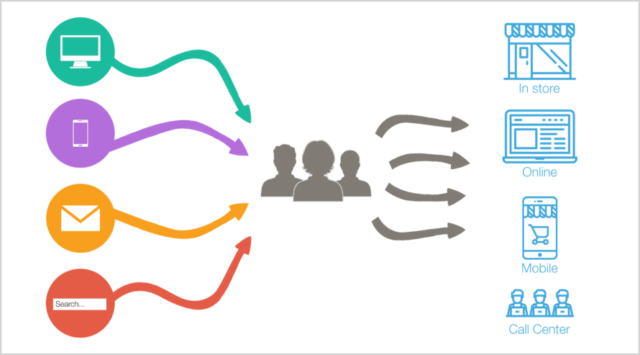
It can also be difficult to gather the right data. It can be confusing to collect and process metrics from diverse marketing channels. This means marketers may not be certain about what is boosting leads. Without proper marketing analytics, how can companies tailor campaigns to each customer segment?
Steps in Creating Successful Multi-Channel Marketing
Tear down the silos

Discourage department siloing by creating an open and transparent work environment. Make communication and collaboration easy. Establish a communications hub where teams can share resources and information.
Effective project management keeps everyone on task. But it also helps teams see how their role fits into the big picture. And it will make it easy to adjust campaigns on the fly. Whether a tweak to the design, the message, or the target audience.
Know your audience
It's not quick or easy to identify your preferred buyer personas. But you will have more success by gathering enough data on each customer segment. Marketers will need to conduct extensive market research before crafting a multi-channel campaign.
Make use of surveys, case studies, A/B testing, and other tools at your disposal. And when doing your due diligence, you will be able to find which channels complement your different customer segments. This will help your team to tailor a holistic marketing approach during the campaign.
Use multi-channel marketing platforms and tools
Many marketing teams will struggle with how to gather and use data for any type of cross-channel marketing. Make it easier for everyone by leveraging a multi-channel marketing platform.
Marketing technology tools will help each team gather and track channel-specific data. But campaign managers can view the big data for the entire project and make correct adjustments to the multi-channel strategy.
Go digital
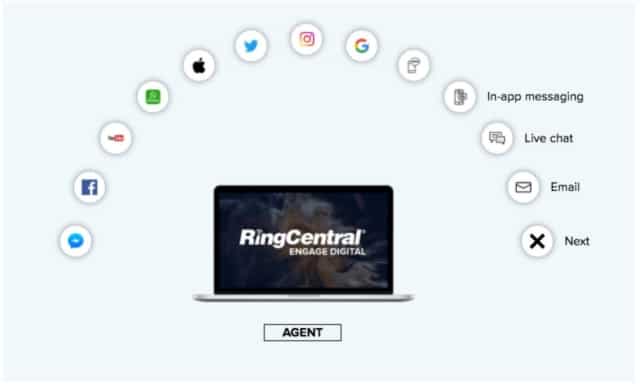
There seem to be countless marketing channels available for customers today. Email, messaging, social media, and mobile apps are just a few of the various channels. Marketing departments can improve their effectiveness by using a platform to boost customer engagement .
RingCentral's digital marketing tool can handle all of your customer interactions in one unified platform. Give your customers a seamless omnichannel experience for all of your online marketing. Whether it's Facebook, Twitter, Email, or Chat, your marketing—not to mention your customer support team—will be able to manage all communications from one workspace.
AI and machine learning make operating efficiency seamless. Automate your touchpoint filters. Prioritise, categorise, and route all customer interactions to the right place. You will create real engagement for your audience and resolve problems quicker. And your social media presence will be more impactful.
Leverage valuable sales analytics and make better marketing decisions. Eliminate detractors and boost ambassadors with the insights gained. With RingCentral, customer experience will improve. Your team will be more productive. And your customers will be more satisfied.

Author
Allyn is the SEO Specialist for EMEA at RingCentral, the leader in cloud communications solutions.
What Are the Benefits of Multi Channel Marketing
Source: https://www.ringcentral.co.uk/gb/en/blog/definitions/multi-channel-marketing/